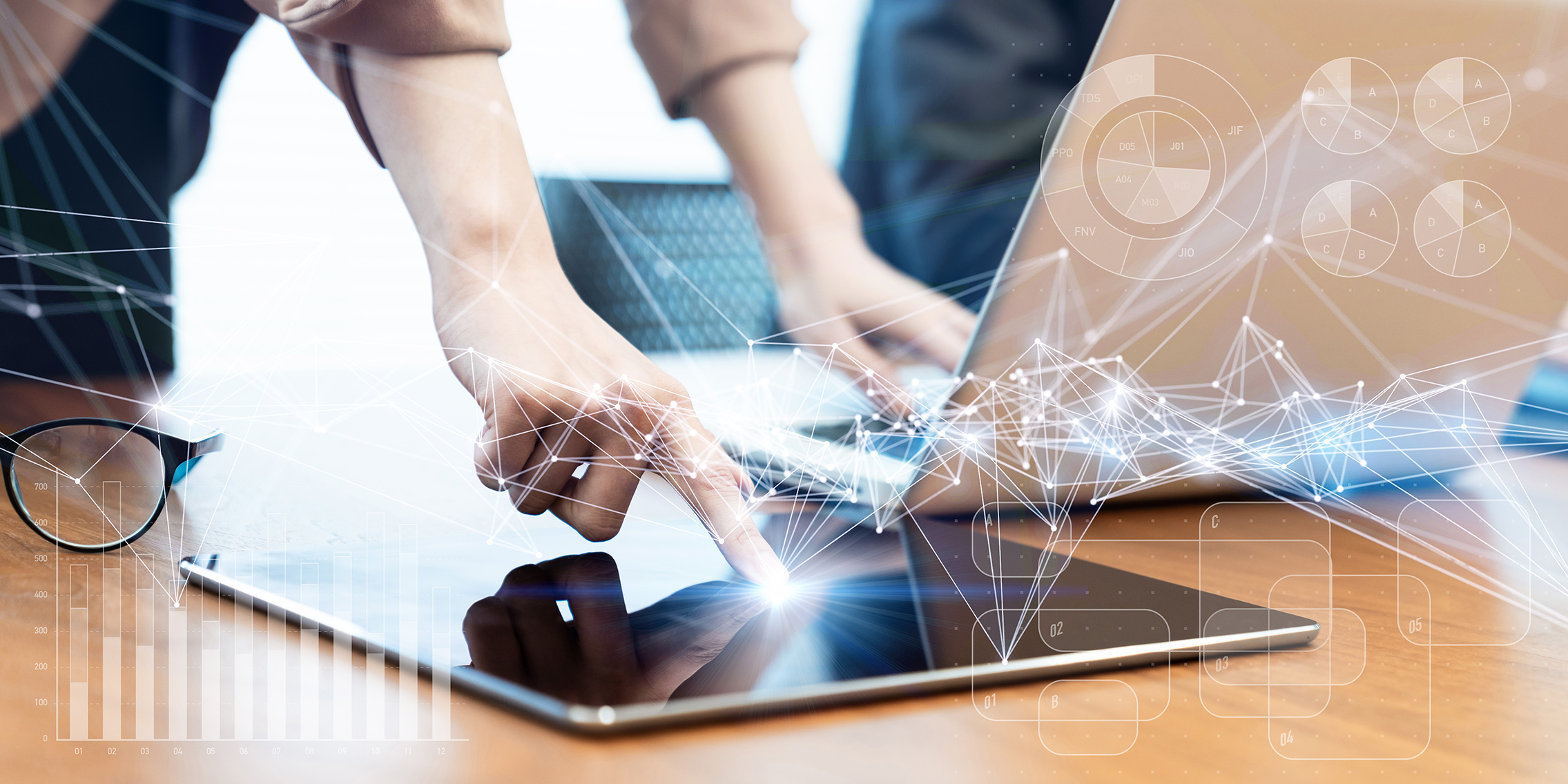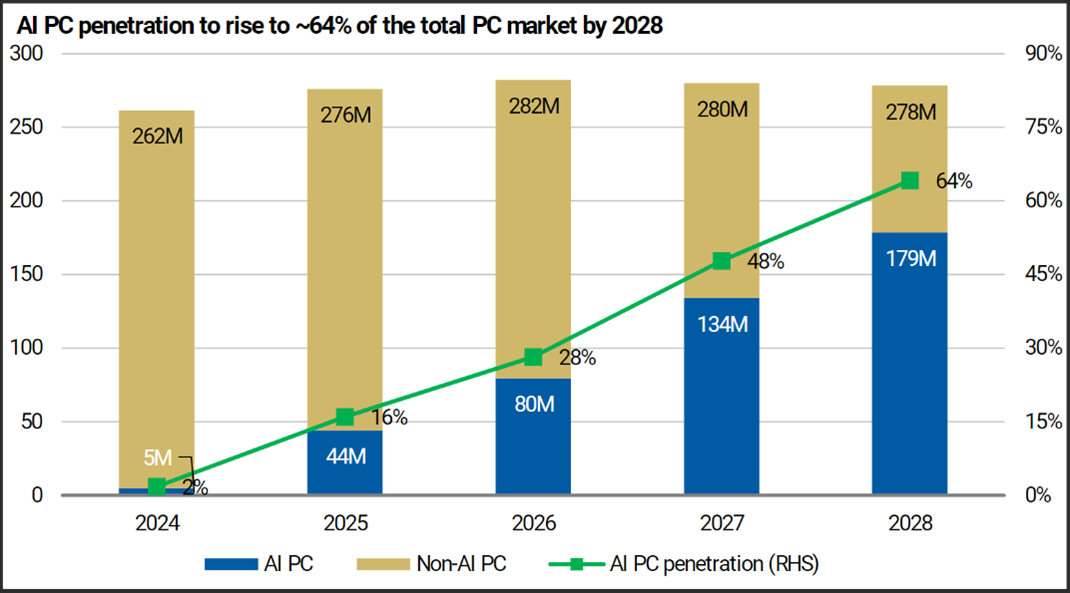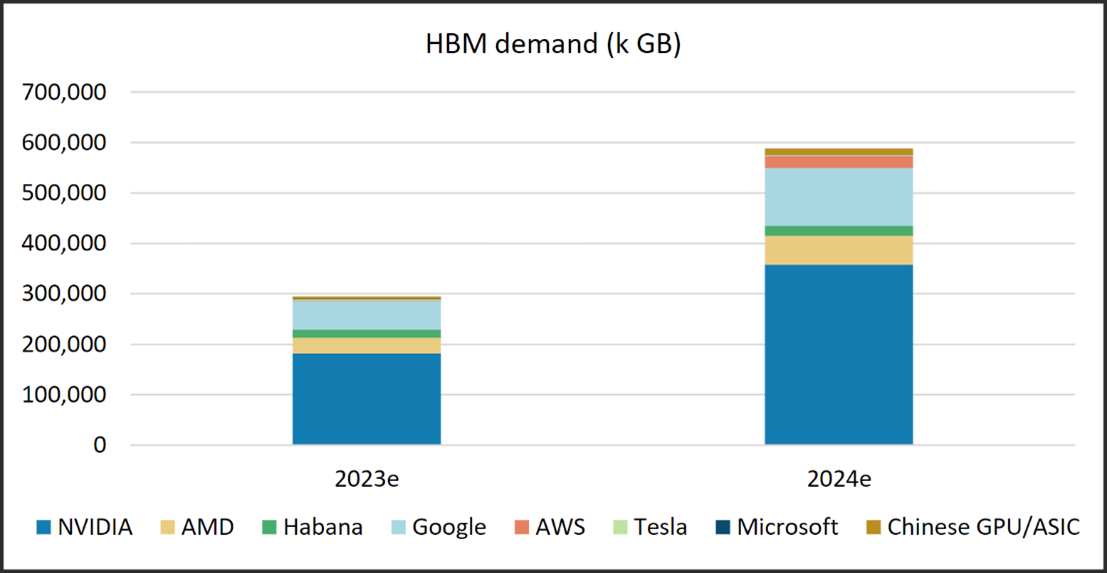1. Changing Growth Trajectory of PC Shipments
Despite a recent slowdown in commercial PC orders, the future looks promising for the PC market. Indeed, the recovery of PC unit sales is based on three main factors:
- Aging Installed Base: Many PCs bought during the COVID-19 pandemic are now reaching the end of their useful lives. This aging installed base will soon need replacements.
- Windows 10 End of Life: Microsoft has announced that support for Windows 10 will end in October 2025. This will push many users to upgrade their systems.
- Adoption of AI PCs: The introduction of AI-powered PCs is expected to drive significant demand.
In the first quarter of 2024, the top five notebook manufacturers (Quanta, Compal, Wistron, Inventec, and Pegatron) saw a 1% year-over-year increase in shipments. This marked the first quarter of growth since the end of 2021. We believe that 2023 was the low point for PC sales, and we expect a significant increase in shipments in 2024.
This recovery is set to benefit major PC vendors like Microsoft, Dell, HP, Lenovo, Apple, and Samsung.
2. AI PCs: The Next Big Thing
So, what exactly is an AI PC?
An AI PC is a computer equipped with advanced components like a Neural Processing Unit (NPU), which enhances its ability to handle complex tasks quickly. Think of the NPU as a mini version of the powerful processors used in data centers, designed to perform rapid calculations with high precision.
Microsoft has already jumped on this trend, announcing a new category of PCs called Copilot+ PCs with multiple new AI functions integrated into Windows. This move follows closely on the heels of Apple's recent M4 processor event, signaling an intensifying competition for AI PCs and the race for faster processing speed in CPUs, or “TOPS” (Trillions Operations per Second – the number of computing operations an AI chip can handle per second).
Chart 1: AI PC penetration to rise to 65% of the total PC market by 2028.



